- Getting around Lijiang. Dont stay in the Old Towns more than 2 days, there is nothing to do. KRISS Oct 9, 2013 05:46
- 2013 Beijing Temple Fair BENNYLAU Feb 26, 2013 03:29
- Malaysian traveling from KUL - LAX vis Shanghai PVG ZATI_DY Jan 3, 2013 20:15
Cause to Celebrate
- Views: 6457
- |Vote: 1 0
- |Add to Favorites
- |Recommend to Friends
Royal and Prophetic Celebration
After ten minutes, the fireworks are obscured behind the thick pall of smoke they have created. The echos reverberating off the buildings make it difficult to determine just where the fireworks actually are. I hang out the window in the stairwell to get a better view but before long I can only see the ground works. Traffic is backing up on the street below as more and more people try to get close to the action. The city is celebrating yet again with fireworks displays at several strategic locations, this one almost on my backdoor.
Chong Qing, means repeated celebrations, the name given to the city by the Song Dynasty’s Prince Zhao Dun at his coronation in 1190, the same year he became Emperor of China. Despite a tumultuous history dating back some 3000 years, and economic ups and downs in more recent times, the city continues to celebrate. A city bulging at the seams with towering high-rise, it is hard to imagine it as it was during the Ming Dynasty. Governor Dai Din who was responsible for the city’s security built the original wall during that period. Triangular rather than square, the wall followed the hilly topography of the peninsular with as many as seventeen quite unique gates of which only four remain today.
Situated at the tip of the peninsular facing east, Chao Tian Men – Facing Heaven Gate, is the city’s most familiar and important gate. Viewed from downstream this area resembles the bow of a huge ship and overlooks the two mighty rivers that dissect the city, converging in a swirling sea of green and brown. Floating pontoon docks chained to the riverbanks accommodate cruise ships, river ferries, floating restaurants and teahouses. Chao Tian Men remains the gateway to the bustling port and wholesale distribution center of the city. Goods no longer arrive by boat but are ferried in by truck and train from the nearby container ports and railway station but the markets, full of vigor and vitality, embody the spirit of the city.
Like a slumbering dragon lying between the rivers, his head facing east and his spine arched, the markets stir well before dawn each morning as buyers and sellers of every imaginable commodity arrive to do business. The breath of the dragon permeates the cool morning air with the aromas of smelly tofu, steaming pots of jiao zi and bowls of chili noodles. They come from all over Chongqing just as traders have come for centuries before them. Indispensable ‘bang bang’ or shoulder pole carriers work the markets long into the day. With cheerful attitude and rhythmic gait they climb the steep stairs with heavy, often-cumbersome loads swaying from their poles. These simple men are the heart and soul of this slowly waking dragon.
Surrounded by mountains, this hilly city is very much a maze of steep and narrow stone stairways, dating back to Ming period and before. With so many stairs in the peninsular district of Chongqing, affectionately known as the ‘mountain’ city, they are an integral part of the local culture – taken for granted by most. However you could come and go and hardly notice them. Much of the city is in fact flat, ping, as evident in many of the place names – Daping, Nanping, Chenjiaping and Shapingba – but you’ll rarely see a bicycle. Tunnels cut beneath the rocky peninsular connecting road bridges across the rivers. Two cable cars give passengers a bird’s eye view of the rivers and their swollen muddy waters.
It’s strategic location at the confluence of two of the country’s largest rivers, the Yangtze and the Jialing has almost guaranteed the cities growth and vitality throughout the centuries. Chongqing has always been a melting pot of people looking for a future or a fortune or both. Once the wartime capital of the Goumingtang and Allied Military Headquarters it holds the record for being the most heavily bombed city in the world at the hands of the Japanese who used an often-moonlit Chang Jiang (Long River) to zero in on their target. Her biggest asset soon became her nightmare.
Military Celebration
Chongqing survived the war and in celebration of both hers and China’s victory the country’s leaders remodeled a tower built during the war years that stood in the square, into the octagonal clock tower we see today. It was later renamed Liberation Monument, and is now one of the city’s best-known landmarks in the centre of Liberation Square. Rebuilt after the war, and already having outgrown her ancient walls, the city has sprawled rather haphazardly during the last fifty years. Narrow streets and lanes that sufficed during the post war, industrial growth era now contribute to traffic jams and constant delays. One advantage of these delays is time to notice things. Tong Yuan Men, arguably the most visible of the city gates on Zhong Shan Yi Lu is one such place.
Rebuilt during the Qing Dynasty, a well-preserved and recently restored remnant of the wall is now a living, outdoor museum with bronze soldiers in battle dress scaling the wall beneath a barrage of arrows from the archers above. While the bronze soldiers act out a mock siege, large crowds of local Chongqing residents relax in the outdoor teahouse on the top of the wall playing cards and sipping tea. A small gallery showcases the regions silk embroidery and Sichuan Opera masks. Across the street hidden behind the modern façades are more alleys and pathways and stairs between the old small and dark timber, bamboo and tiled houses.
Economic Celebration
Chongqing continues to celebrate these days. This year she celebrates the 10th anniversary of her annexation from Sichuan on the 18th of June 1997. Chongqing became one of only four municipalities under direct control of the Central Government and as such enjoys many unique privileges. Chongqing’s fortunes have risen and fallen almost as often as the water levels of the Yangtze, the lifeblood of this huge metropolis but she continues to celebrate. Emerging like a butterfly too long bound in a cocoon of economic poverty the city has caught the attention of overseas investors and homegrown entrepreneurs.
Over the past ten years she has experienced remarkable growth and exciting changes rendering much of the city unrecognizable even after a short absence. Like a young woman at the hands of a surgeon, the face of the city is changing – being remodeled to reflect the women of the city, renown not only for their beauty but their vitality and passion. Despite the wholesale demolition of large tracts of mostly derelict properties, many small pockets still remain in the heart of the city within the limits of the old city walls while the all too familiar ‘red crane’ fills the cityscape in every direction.
As Chongqing rushes headlong down the river of modernization, she pushes our understanding of urban sprawl to the limits as new residential, education, economic and technical zones mushroom in the fertile soil of investment opportunities and special benefits that the government is lavishing on this mega city. New suburbs are spawning residential developments with names like Palm Springs, Beverly Hills, and Blue Lake, offering China’s “new rich” a lifestyle they could only dream of just a few years ago. Spacious villa style homes nestle in open parklands surrounding man made lakes with 24 hour security and private sporting facilities that include, air-conditioned gymnasiums, and both indoor and outdoor tennis courts and swimming pools.
In an effort to reduce traffic jams that plague the inner city especially during peak hours, the transport infrastructure is undergoing a massive face-lift. The latest improvements include more than five new bridges either planned or currently under construction with the new Jia Hua bridge across the Jialing Jiang opening to traffic on the eve of her anniversary. The completion, recently of the first phase of a light rail system, which will grow to seven lines throughout the city, including one from the airport, should help alleviate some of this congestion. A semblance of a ring road now circles this less than typical Chinese city.
New overpasses, subterranean pedestrian crossings and glittering underground shopping malls are everywhere. The new North Railway Station, which opened this year, handles most services to the eastern Provinces. Upon the completion of the Three Gorges Dam project, the higher water level of the river is expected to facilitate increased shipping to this the largest of inland ports enhancing it’s role as a major distribution hub in south west China. With no less than five major Central Business Districts, one hardly ever needs to step outside the local district for everyday commodities.
As the upstream terminus for the Three Gorges River cruise it’s a city with a lot of visitors passing through. Many of them do just that – pass through, seeing only a façade – the bright new face of this modern era masking a fascinating past and a gutsy present bubbling beneath the surface. This was the ancient capital for Prince Zhao Dun and the compact walled city of Governor Dai Din. I can’t help but wonder what these two men would make of their city now. Today she is my city and a place I have grown to love and respect. She can only truly be appreciated by taking a walk with her. Walk just some of the thousands of stairs that tell a tale or two. Walk a few thousand paces around her ancient whispering walls and feel this giant breath.
Walking Tour of the Walled City
Refer Travel Tips Chongqing
for more detail on each of these sites in the YuZhong District.
Coded for easy reference.
YZ 01 Liberation Monument Clock Tower
YZ 02 Ar hat Temple One of two active temples just off the square
YZ 03 Hong Ya Dong with dining, shopping, accommodation and theatre
YZ 04 Chao Tian Men Docks, Viewing Plaza, City Gate, Planning Museum Y20
YZ 05 Dong Shui Men is a small but beautiful gate by Huguang Huiguan
YZ 06 Huguang Huiguan Y30 is the restored Guild Halls and Silk Embroidery Gallery outside
YZ 07 Chu Qi Men is a seven arched gate with stairs or use elevator nearby
YZ 08 ‘18 Stair Teahouse’ Stop for a pot of tea or pay Y5 for a tour of antiques, photos, letters (another French connection)
YZ 09 Mosque, Antique Markets and back street alleys to explore by the teahouse
YZ 10 Di San Bu Dao is a mountain boardwalk high along the riverbank includes war time mansions crca 1930, and the French Benevolence Hall, church and hospital circa 1902
YZ 11 Xing Long Jie is a lively market and traditional housing area slowly being restored
YZ 12 Tong Yuan Men and teahouses
YZ 13 St Joseph’s Catholic Church and others
This is a circuit and can be walked in either direction or split into smaller walks.




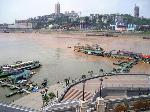
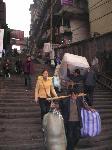
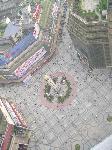
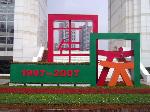
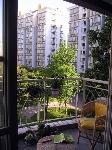
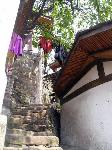
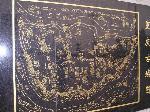
 Copyright © 1998-2025 All rights reserved.
Copyright © 1998-2025 All rights reserved.
1.
Jan 8, 2009 04:09 Reply
EILEENHU said:
wow
thank you for your information
you are so nice
I can't wait to read more